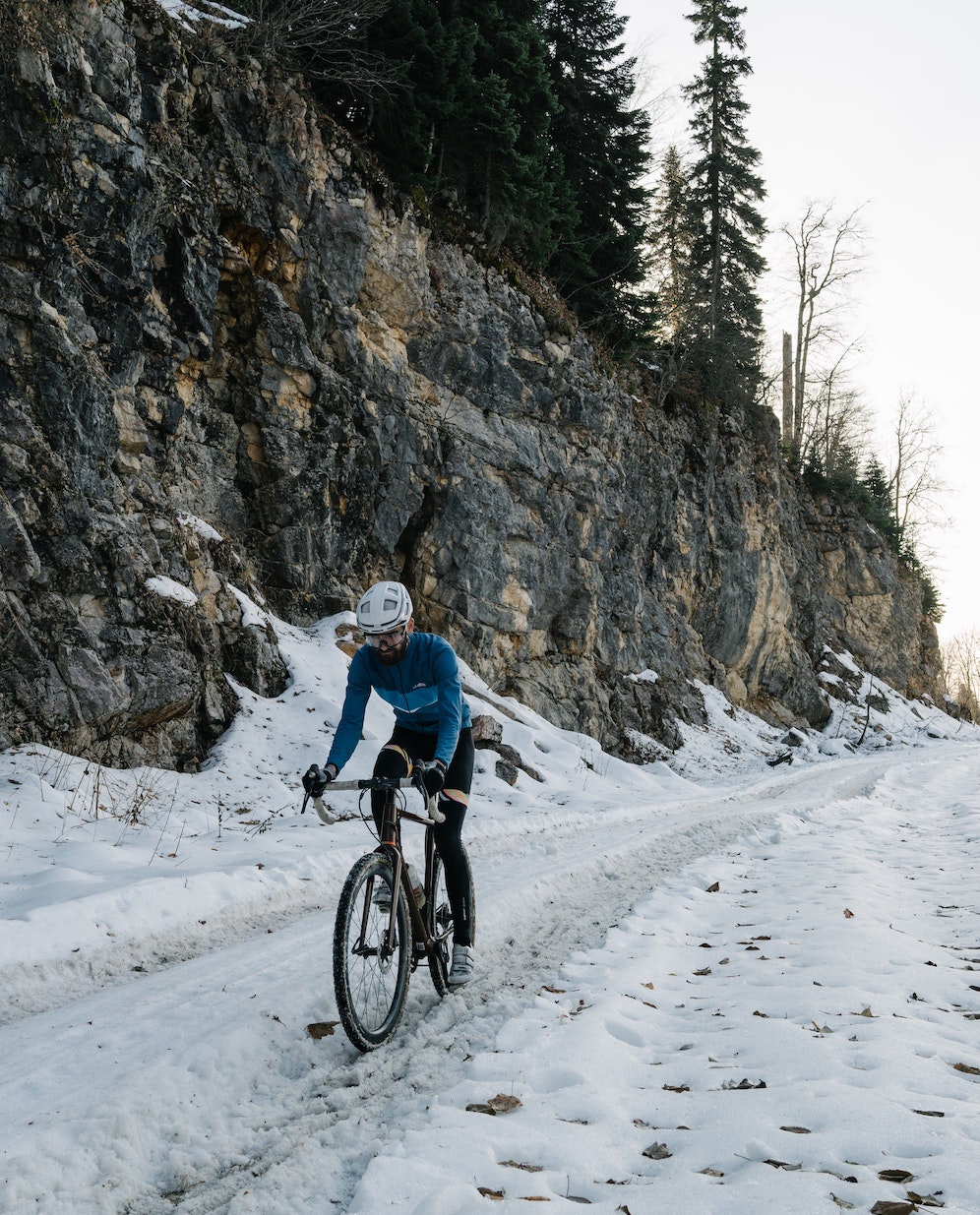Top 11 Tips for Better Winter Cycling
Winter biking, cold-weather cycling, and similar terms refer to riding a bicycle on surfaces covered in ice, snow, and slush. Cycling in cold weather presents several difficulties when the temperature is close to or below zero. Urban commuters may encounter snow, salt, slush, and sand on city streets, which might cause corrosion and harm metal bike parts.
As a result, for some cyclists, the winter season is enough to discourage them from leaving their homes. However, if you are a biking enthusiast, and do not care how cold the weather is, keep reading the tips below and remain safe in the saddle and enjoy your ride.

1.Dressing in Layers
As you pedal, your body generates heat rapidly; therefore, do not overdress. You should begin your ride wearing just enough clothing to be slightly chilly. When you overdress, you will produce a great deal of sweat, and so when you stop moving, the breeze will remove your body heat, leaving you cold as well as shivering, which could lead to hypothermia.
You may add or remove layers to maintain comfort during the commute. For example, a water-resistant windbreaker is an excellent outer layer for keeping you dry and warm.
2.Covering Your Skin and Head
The wind chill on uncovered skin increases rapidly while riding an electric bike, even at relatively low speeds, and the resulting cold shock might be distracting. In freezing weather, a face mask (balaclava) can be helpful. When you do, make sure the scarf is short enough to avoid getting tangled in your wheels.
Winter is when falls happen more frequently, so you might need the headgear. To wear a balaclava or wool cap underneath, make sure your helmet is big enough.
3.Keeping Fingers Warm
Make sure to warm up your fingers. The ideal gloves will be water-resistant and have gripping fingers and palms to grip handlebars that are likely to be slick. A safety concern with cold hands is that numb fingers can make it harder to brake.
4.Wearing Boots
When cycling in winter, you must wear boots and take the straps or clips off the pedals. Have your feet available in case you have to leave your bicycle quickly. Ensure the boots are water-resistant and spacious enough to fit thick socks. You need space around your toes so that a warm air pocket can form.
5.Keeping Eyes Covered
Your eyes must be covered with protective gear. Eyes sting as the temperature drops. You can shield yourself from the wind and sun glare by wearing non-metal sunglasses. A great accessory for colder weather is ski goggles.
Instead of spending money on lens spray, which can cause your glasses to fog up, treat the lenses using gel toothpaste. Check the toothpaste to make sure it doesn’t contain baking soda, which might scratch the lenses.
6.Controlling Exertion
Exertion and moisture are not only about how fast you move. In the winter, other factors become more important when the balance is more fragile. Pay attention to the slope, the speed and wind chill, the sun and shade, the fact that it gets colder at the bottom of hillsides, and the time of day.
All of these can affect the body temperature, so plan and make changes to how much you move and how many layers you wear.
7.Winterizing Your Bike
After every ride, clean and lube your drivetrain, including your cassette, chain, chainset, and rear and front derailleurs. This is especially important if you ride after the salt trucks have been out because the salty road spray may eat your bike parts for breakfast.
You can use synthetic lube in the winter. Use an anti-rust spray on any steel that is out in the open. Make sure the cables are sealed and clean. You don’t want the brake cables to freeze up when the roads are icy.
8.Using the Right Tires
Lowering the pressure in your tires will help you get better control on slushy or wet roads. Skinny tires are often better at cutting through snow than fat tires. If it’s icy, put on studded tires. On the contrary, if there is deep snow outside the window, which is very unlikely, the bigger your tires, the better. This is why fat bikes have been made.
9.Lighting Up
When it’s winter, it’s more likely that you’ll require lights to both see and be seen. This could be because the sun isn’t as strong or because you might need to realize how short the days are and end up out in the dark.
You must remember that lithium batteries degrade in cold temperatures as you decide. Consider purchasing a cheap spare lighting system, and ensure everything is charged up before leaving.
10.Taking Short Rest
It’s simple to overlook that your energy-intensive body heat will be rapidly lost from you as the air temperature drops. Shorten your rest periods and avoid pausing at the peak of a long, shady descent. When getting off the bike, be careful of ice patches because even though your studded tires won’t slide, you could end up in a heap of limbs if you’re not attentive.
11.Fueling Up
To keep the core warm and your legs moving, your body will expend more calories. Naturally, this calls for taking increasingly larger cake breaks. If you bring snacks, store them in an inner pocket to prevent freezing or stiffening. Last but not least, remember to hydrate. You still have to drink water and juices to prevent dehydration, even though it’s cold.
Final Words
Cycling in the winter months can be bearable if you are well-prepared. It may become an enjoyable and amazing experience.
If you feel discouraged on the road, keep paddling, knowing that you’re never far from a cup of tea, a hot shower, and a big piece of cake, which will taste even better because you had to endure so much pain to get them. It can be fun cycling in winter if you embrace it with all your heart.






